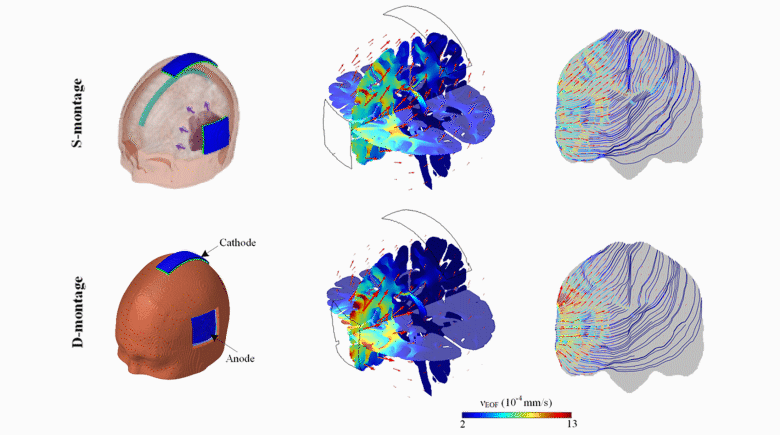
Cerebral edema characterized as an abnormal accumulation of interstitial fluid has not been treated effectively. This work aims to develop a novel treatment approach to alleviate the accumulation of the excess fluid in the brain parenchyma by applying a direct current based on the brain tissue’s electroosmotic property. To achieve this goal, an anatomically detailed head model is developed and employed to assess the feasibility of the approach. Two electrode configurations (S- and D-montage), referring to patients with and without decompressive craniectomy surgery, are designed to evaluate the distribution of the electric field, electroosmotic flow (EOF), current density, and temperature across the brain under an applied direct current.
The S-montage is shown to induce an average EOF velocity of 7e-4 mm/s underneath the anode by a voltage of 15 V, whereas the D-montage induces a velocity of 9e-4 mm/s by a voltage of 5 V. The simulated results demonstrate that the edematous fluid can be driven out of the edema region close to the anode to subarachnoid space underneath the cathode and then absorbed into superior sagittal sinus together with cerebrospinal fluid, resulting in the alleviation of the cerebral edema. The magnitude of EOF is proportional to the electric field, and the EOF direction follows the current flow from anode to cathode. Moreover, the induced current density and temperature increase are within the safety range. The proposed approach could potentially be developed to a novel therapy that has important clinical implications for both severe and mild edema treatment by reducing the swelling magnitude and duration in severe edema patients and serving as supplementary for mild edema treatment to complement the limited choice of existing treatments.

